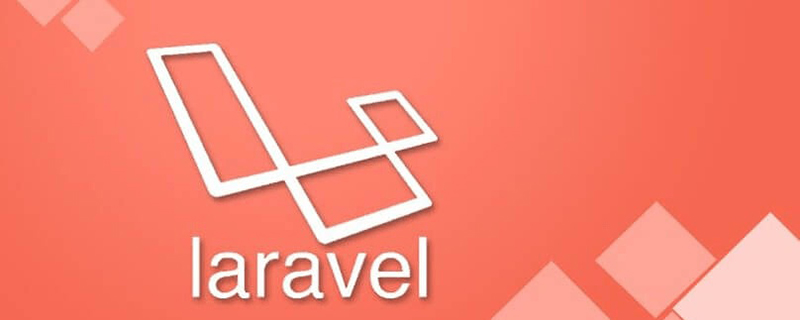
The following columnLaravelwill introduce to you how to install Stone underPHP7to improve the performance of the Laravel framework. I hope it will be helpful to friends in need!

Installing Stone under PHP7 greatly improves the performance of the Laravel framework
As we all know, the heavier the PHP framework, the lower the performance. , because the heavy framework will call a lot of classes, methods and custom functions during parsing, resulting in serious performance degradation.
Laravel is a very popular PHP framework, but it is also a heavy-duty full-stack framework, you can use this method (https://xueyuanjun.com/post/2398.html) to test your Laravel The performance and effects of the application are not ideal.
Of course, Laravel also has a sister version: Lumen, which is a micro-framework similar to Slim. If you feel that this micro-framework is sufficient, it can be used to replace Laravel.
Fortunately, PHP7’s performance has nearly doubled compared to PHP5.6, and Facebook’s HHVM is also a good alternative. So if possible, use the latest version of PHP as much as possible. The benefits are not small.
But for heavy-duty frameworks such as Laravel, even if PHP7/HHVM is used, the performance is still very low. Although caching (such as memcached/redis, etc.) can alleviate server pressure, it only improves the speed of static pages. For a performance-consuming place like Eloquent ORM, it is better to treat the symptoms rather than the root cause (of course you can use the DB facade instead, refer to my question), is there no way? (Some people say opcache, but it is not very effective for the Laravel framework)
No! You need Stone!
What is Stone? This is the author’s post on PHPHub (https://learnku.com/laravel/t/2092/5-minutes-to-improve-the-performance-of-laravel-frame-more-than-10-times), Check out the Stone project address (https://github.com/StoneGroup/stone) and documentation (https://chefxu.gitbooks.io/stone-docs/content/).
The following is the installation method for PHP7:
My test environment is Debian Linux 8 64-bit, OSX can also be used (use homebrew to install Nginx and PHP7, other operations See below), Windows is not recommended because compiling extensions is relatively troublesome.
Using Debian/Ubuntu/Linux mint, you can use dotdeb source, which has the latest version of Nginx, PHP7, MySQL/MariaDB. Of course I won't tell you. I use OpenResty. I won't go into details about the installation process. If you don't know how, please Google.
First install the swoole and runkit extensions.
pecl install swoole
The pitfall of PHP7 here is that if you use this source to install PHP7, since PEAR is not the latest version, you may encounter the problems described in this issues. The solution:
wget http://pear.php.net/go-pear.phar php go-pear.phar
is writing At the time of this article, the runkit extension does not currently support PHP7, so do not use pecl to install it, otherwise compilation errors will occur. But someone has made a modified version that can be used, see this issues.
Installation method:
git clone https://github.com/runkit7/runkit7.git cd runkit7 phpize ./configure make sudo make install
So far, both extensions have been installed successfully.
Then write the ini file based on your actual path to PHP7 and load swoole and runkit. As for Windows or OSX, if you use homebrew to install it, just change php.ini directly.
The path of PHP7 installed using Dotdeb source is /etc/php/7.0/, so my relevant command is:
sudo echo extension=swoole.so >> /etc/php/7.0/cli/conf.d/20-swoole.ini sudo echo extension=swoole.so >> /etc/php/7.0/fpm/conf.d/20-swoole.ini sudo echo extension=runkit.so >> /etc/php/7.0/cli/conf.d/20-runkit.ini sudo echo extension=runkit.so >> /etc/php/7.0/fpm/conf.d/20-runkit.ini
Then install Stone:composer require stone/kernel:dev-master, What I have to say is that at the time of writing this article, there were two errors in the author's gitbook:
1. Wrote pecl as pcel;
2. Composer installation address. It is still the address of his previous project, and he said in the post that because the previous project contained some information about his company, he changed the address to StoneGroup/stone.
Everyone must follow this article when referring to Stone documents and avoid detours. I gave feedback to the author and he fixed the issue.
Finally restart php-fpm and use php -m to see if these two extensions are loaded successfully.
For the next steps, you just need to follow the documentation. At this point, Stone is successfully installed on PHP7! Start Stone and enjoy the performance leap!
PS: I found another similar project, but the implementation details are different. If you are interested, you can take a look: https://github.com/scil/LaravelFly
The above is the detailed content of Installing Stone under PHP7 can improve the performance of Laravel framework!. For more information, please follow other related articles on the PHP Chinese website!
 Introduction to laravel components
Introduction to laravel components Introduction to laravel middleware
Introduction to laravel middleware What are the design patterns used by laravel?
What are the design patterns used by laravel? Which one is easier, thinkphp or laravel?
Which one is easier, thinkphp or laravel? What are the IP reverse domain name checking tools?
What are the IP reverse domain name checking tools? How about MEX exchange
How about MEX exchange How to solve the problem of no internet access when the computer is connected to wifi
How to solve the problem of no internet access when the computer is connected to wifi Baidu SEO keyword ranking optimization method
Baidu SEO keyword ranking optimization method